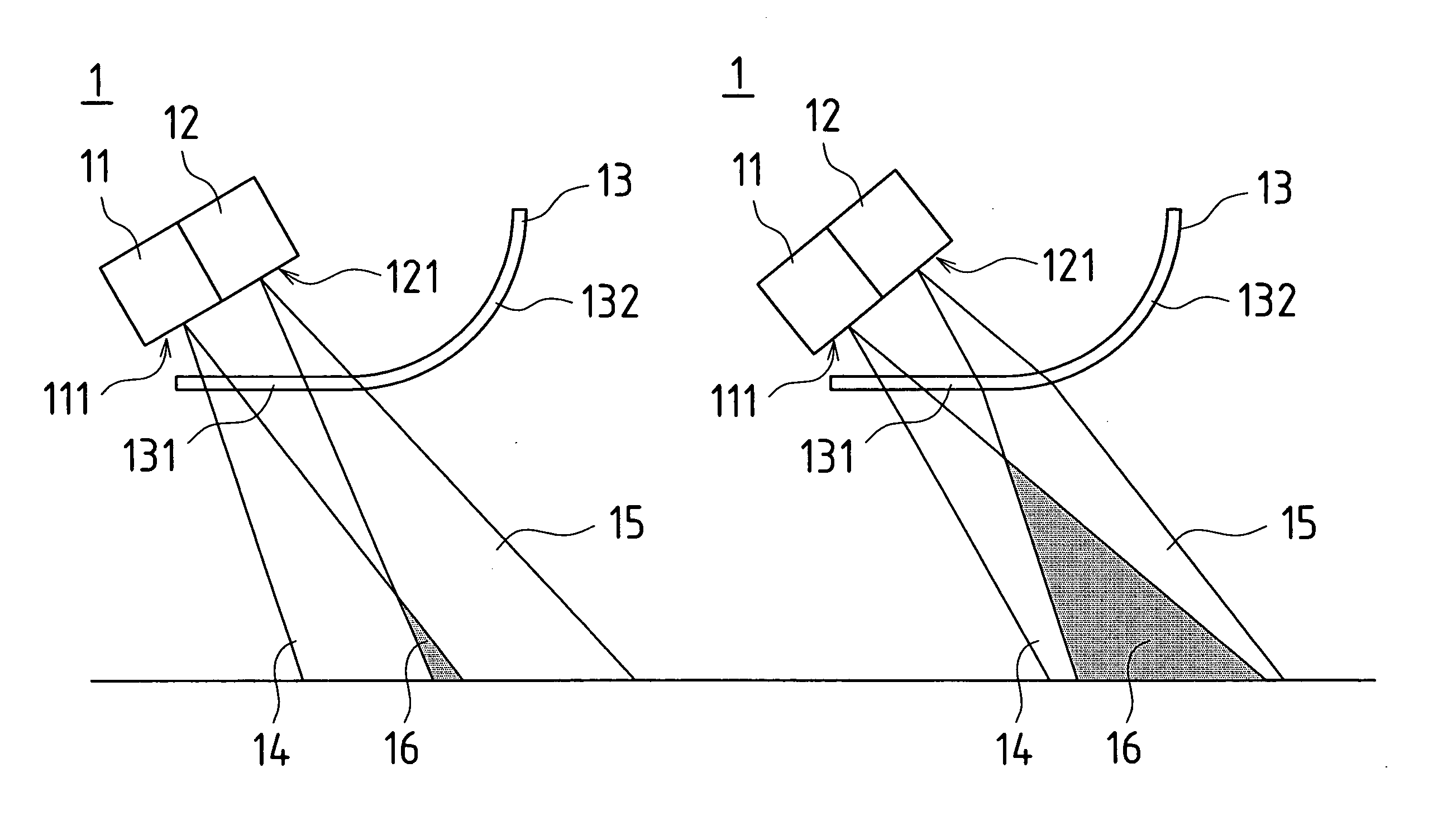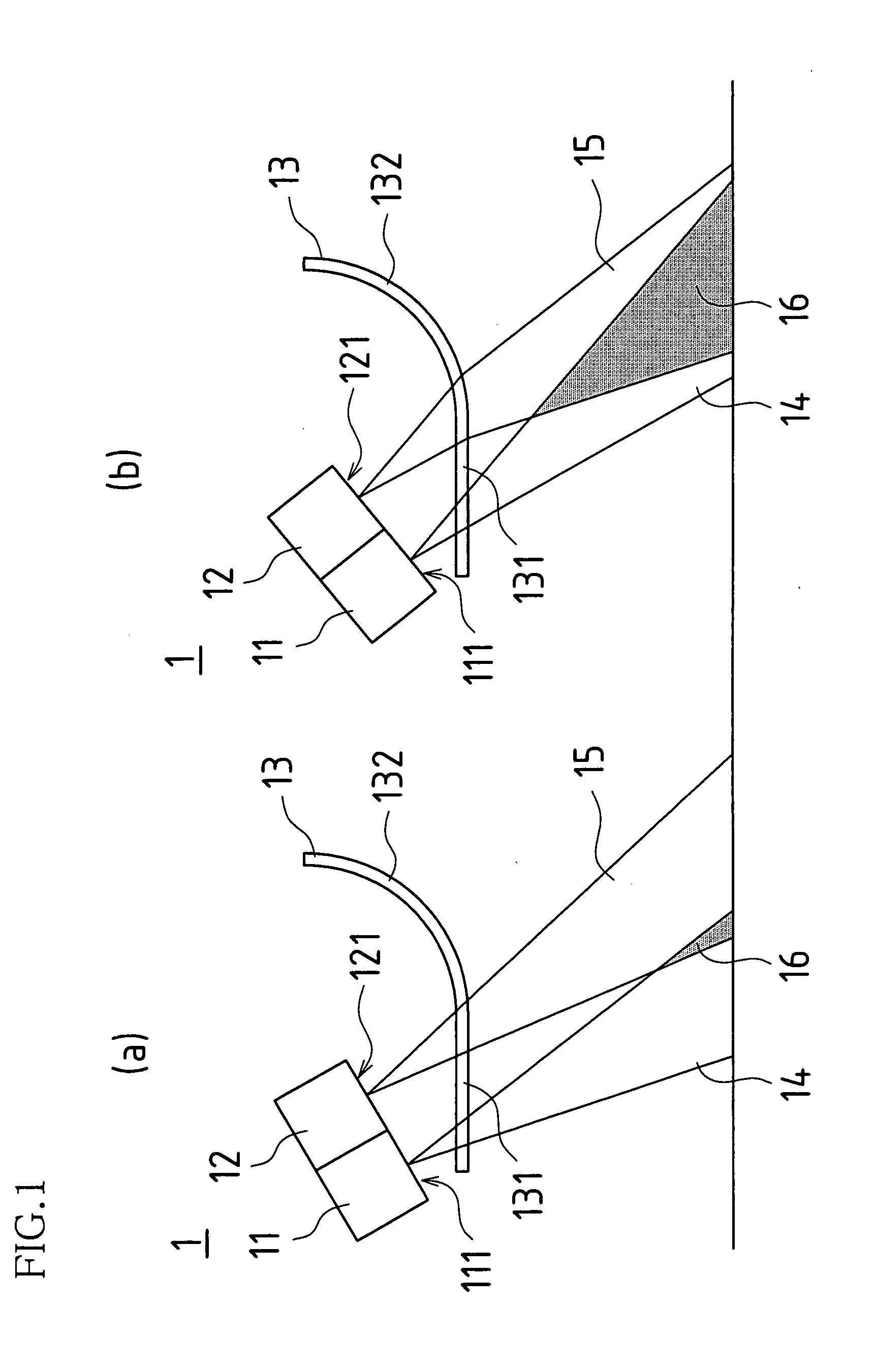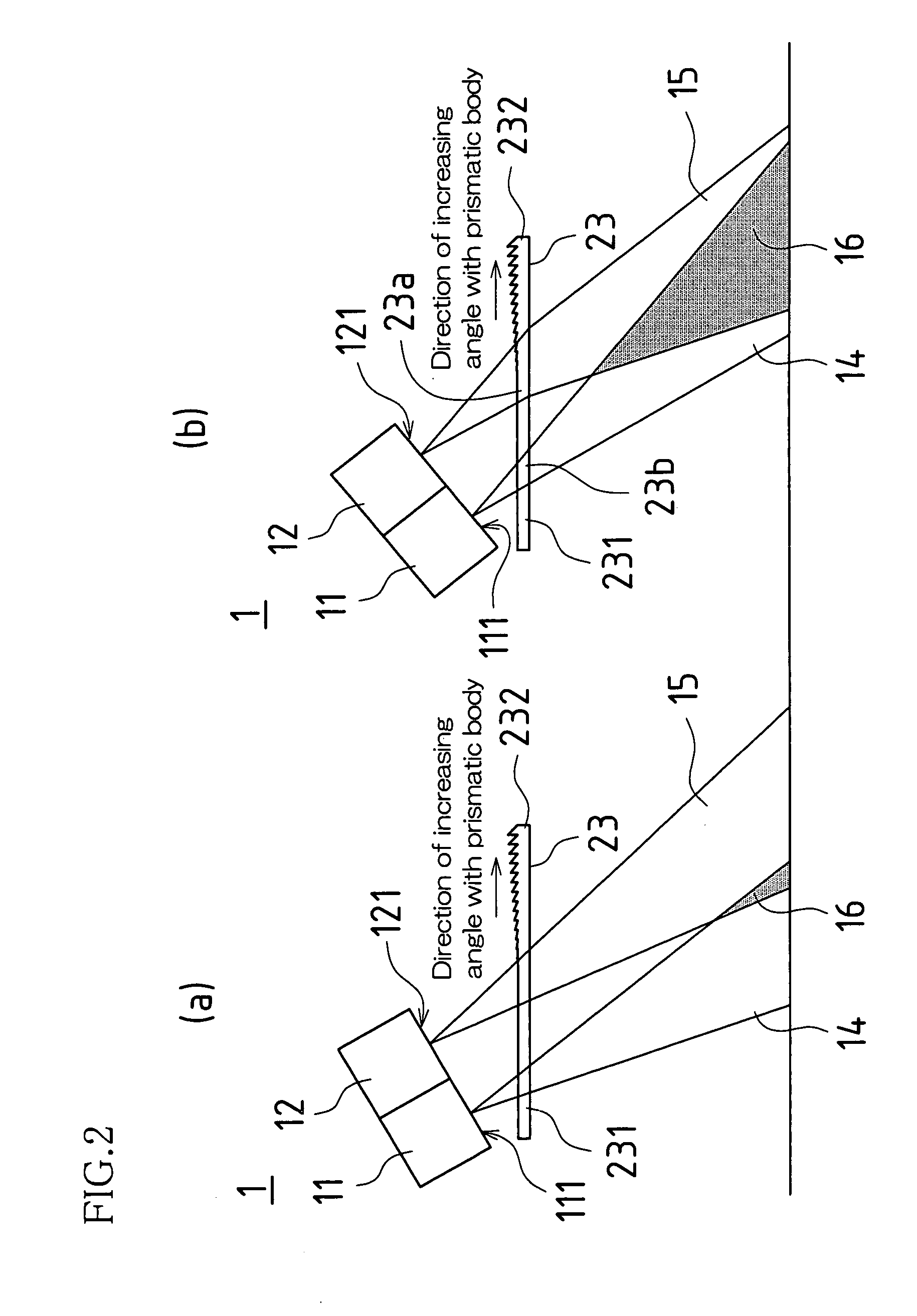Sensor
a sensor and sensor technology, applied in the field of sensors, can solve the problem of not being able to detect objects entering protected zones, and achieve the effect of simplifying the sensor structure and reducing the number of sensor parts
- Summary
- Abstract
- Description
- Claims
- Application Information
AI Technical Summary
Benefits of technology
Problems solved by technology
Method used
Image
Examples
first embodiment
[0022] First Embodiment
[0023] As shown in FIG. 1, automatic door sensor 1 is such that light-projecting component(s) 11, irradiating light from light-projecting surface(s) 111; and light-receiving component(s) 12, receiving light irradiated from such light-projecting component(s) 11, the received light being incident on light-receiving surface(s) 121 after having been reflected, are arrayed vertically at the time that this automatic door sensor 1 is installed. Furthermore, at this automatic door sensor 1, cover(s) is / are employed at housing surface(s) facing light-projecting and light-receiving surfaces 111, 121 for allowing light to be irradiated from light-projecting component 11 and incident on light-receiving component 12. Note also that detection conditions are such that constant density is maintained in the light irradiated from light-projecting surface 111 of light-projecting component 11.
[0024] In accordance with such constitution, this automatic door sensor 1 is such that ...
second embodiment
[0041] Second Embodiment
[0042] The automatic door sensor of the second embodiment differs from the automatic door sensor of the foregoing first embodiment only with respect to the optical path varying means, the constitutions thereof being identical in other respects. Description of the present second embodiment will therefore be confined to the optical path varying means with respect to which it differs from the automatic door sensor of the first embodiment, and like constituents will be assigned like reference numerals and description thereof will be omitted.
[0043] As shown in FIG. 2, arranged at automatic door sensor 1 there are light-projecting component 11 and light-receiving component 12, cover(s) being employed at housing surface(s) facing light-projecting and light-receiving surfaces 111, 121 of these light-projecting and light-receiving components 11, 12. Note also that detection conditions are such that constant density is maintained in the light irradiated from light-pro...
third embodiment
[0051] Third Embodiment
[0052] The automatic door sensor of the third embodiment differs from the automatic door sensor of the foregoing first embodiment only with respect to the optical path varying means, the constitutions thereof being identical in other respects. Description of the present third embodiment will therefore be confined to the optical path varying means with respect to which it differs from the automatic door sensor of the first embodiment, and like constituents will be assigned like reference numerals and description thereof will be omitted.
[0053] As shown in FIG. 3, arranged at automatic door sensor 1 there are light-projecting component 11 and light-receiving component 12. Note also that detection conditions are such that constant density is maintained in the light irradiated from light-projecting surface 111 of light-projecting component 11.
[0054] Furthermore, such automatic door sensor 1 may be provided with optical path varying means varying projected light o...
PUM
 Login to View More
Login to View More Abstract
Description
Claims
Application Information
 Login to View More
Login to View More - R&D
- Intellectual Property
- Life Sciences
- Materials
- Tech Scout
- Unparalleled Data Quality
- Higher Quality Content
- 60% Fewer Hallucinations
Browse by: Latest US Patents, China's latest patents, Technical Efficacy Thesaurus, Application Domain, Technology Topic, Popular Technical Reports.
© 2025 PatSnap. All rights reserved.Legal|Privacy policy|Modern Slavery Act Transparency Statement|Sitemap|About US| Contact US: help@patsnap.com



